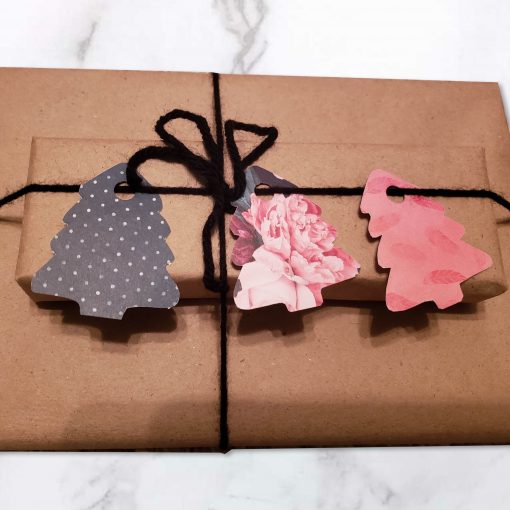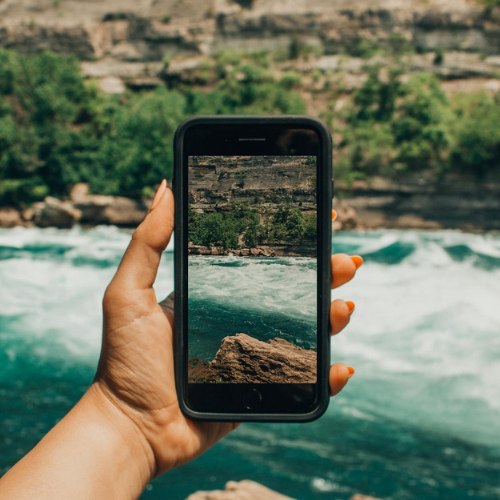
The Great Pacific Garbage Patch is floating garbage in between California and Hawaii. According to this study, it is approximately 600,000 square miles. To put it into perspective, that is nearly the size of Alaska. These garbage patches have massive amounts of plastic in the forms of fishing nets, packaging, and microplastics. There are 5 garbage patches in our world. Many scientists are concerned on the expanding size. The largest contributor, plastic.
We have become desensitized to plastics in our daily lives. There are large movements on skipping the plastic straws and plastic bags. We get in the thought process that someone else will fix this mess. For some, the whole issue seems too daunting and we build up a wall from the issue. Single-use plastics specifically are a growing concern and we have already put ourselves in a tight spot when it comes to the leftover waste of all this plastic.
How did we get to this point?
In 1869, John Wesley Hyatt invented the first plastic, according to sciencehistory.org. Plastic was created as a substitute for ivory, because we were killing too many wild elephants for it to be a sustainable source for billiard balls. At the time, plastic was deemed as more environmentally friendly. It allowed humans to create amazing things. We didn’t consider how we were going to dispose of it. I think it is safe to say that mistakes were made after this point.
Fossil fuels are a key component to make plastic. Plastic production is one of the fastest growing industries in the world. In an article by inside climate news, “IHS Market, expects plastics production to grow on average 3.5 to 4 percent per year through at least 2035.” So we know we need to use less fossil fuels and yet the industry that requires it is only growning.
Mass plastic production only began to really take off about 60 to 70 years ago. This heavily reliance on plastic is a lifestyle that has not been around very long at all, and yet plastic surrounds us.
What are the options to get rid of the plastic?
Did you know it takes 400 to 1000 years for plastic to break down in our environment? Broken down plastic never really disappears. Those small particles are called microplastics and that is a whole other topic to unpack at a different time.
With plastics only being in mass production for the last 60-70 years, it is likely that every piece of plastic we have ever created still exists on our planet, besides the small percentage that has been incinerated, which was not a good solution either.
Recycling Isn’t the Solution. It is a Bandaid.
I used to think recycling plastics was the cure-all to allowing our plastics to live on. My plastic bottle was going to become a new pair of shoes for someone else! I believed it was the best thing I could do to help save our planet as an individual. If you read my post on Reduce, Reuse, Recycle Revisited, you can see that my perspective has changed. I give plastic recycling a hard time now. As I learn more, I feel it is important to start spreading this message.
According to the Environmental Protection Agency (EPA), in 2017, we recycled 8% of plastic overall in the United States. The other 92% of plastics then will either go into our environment or land up in a landfill. On top of that, we don’t have a proper infrastructure to properly handle even that 8% of plastic. Recycling facilities have voiced concern that the demand for recycled plastics is low. Some recycling facilities are having to pay other companies to take it.
Up until about 2 years ago, we were shipping a portion of that 8% of recycled plastics to China. Now China has banned accepting recycled plastic imports. They have too much of their own to keep taking our’s. This leads to companies shipping it to other countries that don’t have a proper government and infrastructure to regulate what they should be accepting.
If you are discarding plastic, at least give it a chance by recycling. I just wouldn’t look at it as the fix to our plastic problem.
Check out the documentary The Story of Plastic for a sobering explanation of plastic industry. They really dive into where the plastic is going.
Can’t We Just Burn It?
Industrial incineration has been a recommended way of reducing our trash on this planet. When it comes to plastics, this is not a good solution. When plastics are made, the manufacturer considers the use of the plastic. Clothing that needs to be water resistant is made with chemicals that help with that. Plastics that will be used around babies must be safe if the baby decides to stick it in its mouth. What is not taken into consideration during the manufacturing process is ensuring it can be safely burned.
In the book, Cradle to Cradle, they point out that in burning plastic, harmful toxins and dioxins are released into the environment. So much so, that trees’ leaves next to some of these incineration plants cannot decompose, they have to be burned as well. Amazing! Imagine trees that cannot naturally decompose because of all of the toxins we have put into the air.
Glittemary Johnson has a fantastic video on plastics in which she explains that even the filters that are made to catch those harmful air pollutants at incineration plants don’t have a proper procedure for being disposed of. They still end up in our environment. All incineration does is make the problem appear physically smaller in the form of ash. Our air and the hazardous leftover is still an issue.
Where do we go from here?
I prefer to break down what I can control when a problem seems too big. I am not perfect at this, but doing nothing just doesn’t seem like an option at this point. Here is where I am with what I hope to do with the plastic pollution crisis.
1. Refer to Plastic Recycling as Downcycling
Downcycling is a term used by many environmentalists when describing the plastic recycling process. When plastic is recycled it is melted down and used for something that it was not originally intended for. This process requires recycled plastic have virgin plastic added into it to increase it’s strength and this mixing of plastics then makes it near impossible to again be recycled. On the rare occasion that something recycled does get turned into something new, it is used once, then will end up in the landfill or as an environmental pollutant.
We should start to use the term downcycling instead of recycling when it comes to plastic. Let us remind ourselves that even in the small chance it does get turned into something, it will eventually then end up in a landfill, burned, or as pollution.

2. Take in your surroundings
I encourage you to really pay attention for a day to see the amount of plastic you encounter. It is one thing to nod your head and agree that plastic is everywhere, it is another to consciously see the sheer volume. It is ingrained in our daily lives. This was an incredible wake up call for me. This first step has lead me to be more conscious.
Single-use plastics are not just the zip-lock that you put your grapes in for snack, anything that you use once or a few times that is made of plastic is a cause for concern.
- Cheap headphones that your cat chewed through, should have paid more attention to her…
- Hair-tie you could have sworn was on your wrist…
- Cute pair of earrings you wore for that one event.
- Glitter in that party popper that you accidentally let off too soon anyway.
- Balloons…I am not a fan.

3. Zero Waste Movement
The term zero waste was originally started as a way for companies to shoot for manufacturing processes that left no waste in our environment. So much waste comes from companies, that this makes a lot of sense for companies to keep reduction in mind to become better stewards of our planet. Especially if they stand behind corporate social responsibility.
Unfortunately, zero waste has earned a bad reputation from an individual perspective. Many who have noticed the impending waste issue on our planet started working to reduce their footprint within their daily lives. They call it a zero waste lifestyle. It was well intentioned, but the term leaves a sour taste in people’s mouth, myself included. Many argue that you can’t go completely zero waste and that the name really suggests an all or nothing attitude. However, I know us humans have a flare for the dramatic and “low waste lifestyle” really doesn’t sound as cool. This has lead the zero waste lifestyle term to stick.
When it comes down to it, the intentions of zero waste are to become aware of what you recycle and throw away and work to reduce that. I plan to dive into this more, but in the mean time, there are so many great resources on zero waste. I will link them on my knowledge base here.
Some ways to incorporate Zero Waste:
- If new items are needed, purchase items with less packaging when possible.
- If you live in an area that allows you to bring your own containers and fill them up with product, give it a try.
- Try out companies like Plaine Products that will take back their bottles and will refill them for you. Say goodbye to plastic shampoo bottles with this!
- Consider the environment over convenience.
Photo by Polina Tankilevitch from Pexels

4. Get Involved
Community projects, government agencies, and company initiatives are just some of the things that drive large scale change. I encourage you to get involved where you can.
I have found getting involved incredibly overwhelming. It is easier for me to fall back to focusing on what I can do as an individual. I am working on finding where I belong within this picture. If you are like me, start with voting and work your way out from there.
Voting doesn’t just come down to choosing a president, despite what most news articles make it out to be. I encourage you to pay attention to local elections for city, county, and state level.
Change doesn’t happen unless we use our voice and work for what we want to see. Let us give it a go together!
Be kind to yourself and the planet.
Resources:




